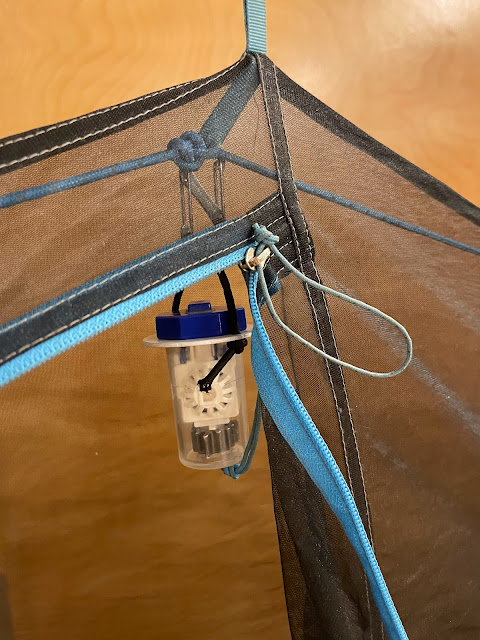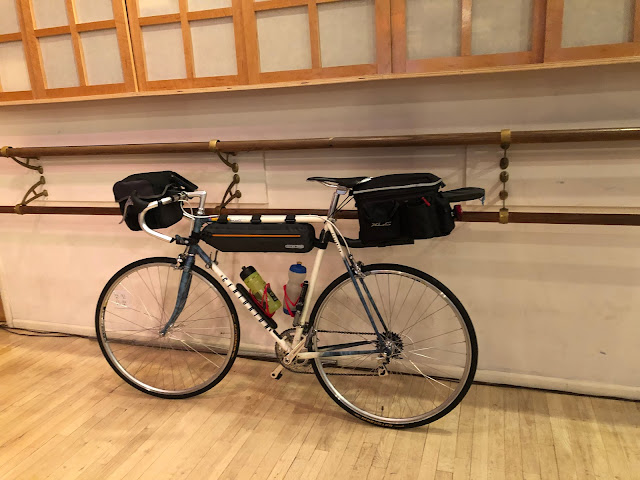Planning Cross Country 2024 - Update March 26, 2024
Departure
I had been considering flying from New York to Portland as early as June 17th, but my further research into the weather indicates that to avoid very cold weather in Yellowstone I need to delay my trip by one or two weeks. I now plan to leave between June 24th and July 1st.
Route
After riding 100 miles through Oregon from Portland to Astoria, I will follow the first 3100+ miles of the route of the Trans Am Bike Race, all of which will be new to me. But after that, once I get to southern Illinois, I will leave that route. I hope to visit Dave and Connie Nadolski in Carbondale, Illinois. On my 4,500-mile 90-day trip in 2019, while Dave and Connie were in Canada, I spent two nights in their home. After leaving southern Illinois I will ride to Chattanooga, Tennessee, spending nights at places I stayed in 2019, namely Dover Inn Motel & Cabins, Montgomery Bell Campground, Knights Inn Murfreesboro, Foster Falls Recreation Area, and The Crash Pad in Chattanooga. I have fond memories of all these places, and of riding through The Land Between the Lakes. You can read about my 2019 travel from Chattanooga to Carbondale here in the posts dated July 1st through July 10th.
From Chattanooga I will ride to Cherokee, North Carolina, at the south end of the Blue Ridge Mountains. I will then ride the full length of the Blue Ridge Parkway and Skyline Drive, staying at several motels and campgrounds I visited on my trip in 2019. You can read about my 2019 travel through the Blue Ridge Mountains here in the posts dated June 4th through June 20th.
I've split my very long routes into daily routes, all of which you can see here: Cross Country 2024 routes
I've created a spreadsheet showing where I plan to spend each night which you can see here: Cross Country 2024 spreadsheet This spreadsheet uses the programming in the spreadsheet I used for my 90-day 4,500-mile trip in 2019 and shows my departure and arrival dates for each place I stay. When I change the number of nights I spend somewhere, the spreadsheet recalculates the departure and arrival dates. The spreadsheet also includes information about the cost of the motel, hostel, or campground where I plan to stay, as well as the number of miles to be ridden each day and the number of feet of climbing per mile. The light grey background indicates that the cell is calculated with a formula. The spreadsheet shows that I will stay in only a few homes, and that the split between motels/hostels and campgrounds in about 50/50. Because the spreadsheet is a Google sheet it will be available to me on my phone.
Gear
Clothing
I had hoped to be able to take only warm-weather biking clothing (shorts, 0"-ankle socks, short-sleeved t-shirt, fingerless gloves, and a windbreaker), but even leaving as late as July 1st I expect to encounter temperatures in West Yellowstone as low as 40 at night with highs during the day as low as 70. Because of this I will need to take cold-weather clothing (tights, 4"-ankle socks, two long-sleeved wool shirts, fingered gloves, a cap, and a jacket). Instead of two I will take only one each of shorts, 0"-ankle socks, and short-sleeved t-shirt. Once I get to Pueblo, Colorado, the weather will be warm so I will then send home the cold-weather clothing and have sent from home another pair of shorts, 0"-ankle socks, and a short-sleeved t-shirt. I hope that I won't need to swap clothing again when I get to the Blue Ridge Mountains.
For the first 1200 miles of my trip, from Portland, Oregon, to Wisdom, Montana, I expect to not need any of the cold-weather clothing, all of which will fit in my trunk bag except for the jacket. I could invert the sleeves into the zipped jacket which I would fold neatly and place in a ziplock bag, to be secured to the top of my trunk bag by two bungee cords. When I use the water bladder it would be carried on top of the jacket. But perhaps I can find a jacket just as warm as the one I have but with much less bulk.
Sling for contact-lens cup
Every night I clean my contact lenses by putting them into a cup containing hydrogen peroxide. The cup must be kept upright, which poses a challenge when I'm sleeping in my tent. As I explained in Gear Update - April 10, 2021, I had Uriel Gurgov divide the pocket on the inside of my NEMO Hornet Elite 1P tent so that I could store my contact lens case on one side of the pocket and my phone on the other side of the pocket. Unfortunately this didn't work well, since the cup would not stay upright. David Brorein, a machinist who has done previous work for me (Gear Update - October 15, 2023), cut a large hole and drilled two small holes in a metal washer so that I could make a sling to hold my contact-lens cup. David also painted the washer so that it would not rust. The black line is some leftover shock cord for my tent pole. I will suspend the sling from a loop on the top of my tent using an S-Biner #1 dual carabiner.
Because I will use the sling only when I sleep in my tent, I will store the sling in the tent's stuff sack.
Bear spray
I'll be going through grizzly country, so I will take bear spray and carry it in a bear-spray bottle cage (smaller than a water-bottle cage) attached to a bottle-cage bracket mounted to my handlebar. When I walk around a campsite I will carry the bear spray in a holster attached to my belt. The picture below does not include the bear spray because it is not allowed in luggage so I have had it shipped to my hosts in Portland.
While riding in Manhattan I've noticed that sometimes I bump the bear-spray cage with my left knee when riding out of the saddle or when stopping. I'm already learning to avoid doing that.
Spare tire
I usually haven't carried a spare tire, but I will do so on this trip, and maybe on all my trips from now on. I don't want to store the spare in my handlebar bag or my trunk bag which are already full, and I probably won't need the spare for at least 2,000 miles, so I don't want to store it with things that I need every day. Fortunately I won't need to do that, since I can attach the spare tire, enclosed in a plastic bag, to the bottom of my rear rack.
Three reusable zip ties hold the folded tire inside the plastic bag, while three useable zip ties secure the tire to the rack and do not interfere with mounting my truck bag onto the rack.
At the suggestion of Stan Redmond, whom I met in a Facebook biking group, I'll be riding Continental Gator Hardshell tires for their durability and puncture resistance. In 2022 Stan rode the entire length of the Trans Am Bike Race route (read about his trip here) and has been advising me about the route.
If you post a comment, please identify yourself,
preferably by using your Google account.











Looks great. You are a master of the road and space conservation.
ReplyDeleteI'm working on it.
Delete